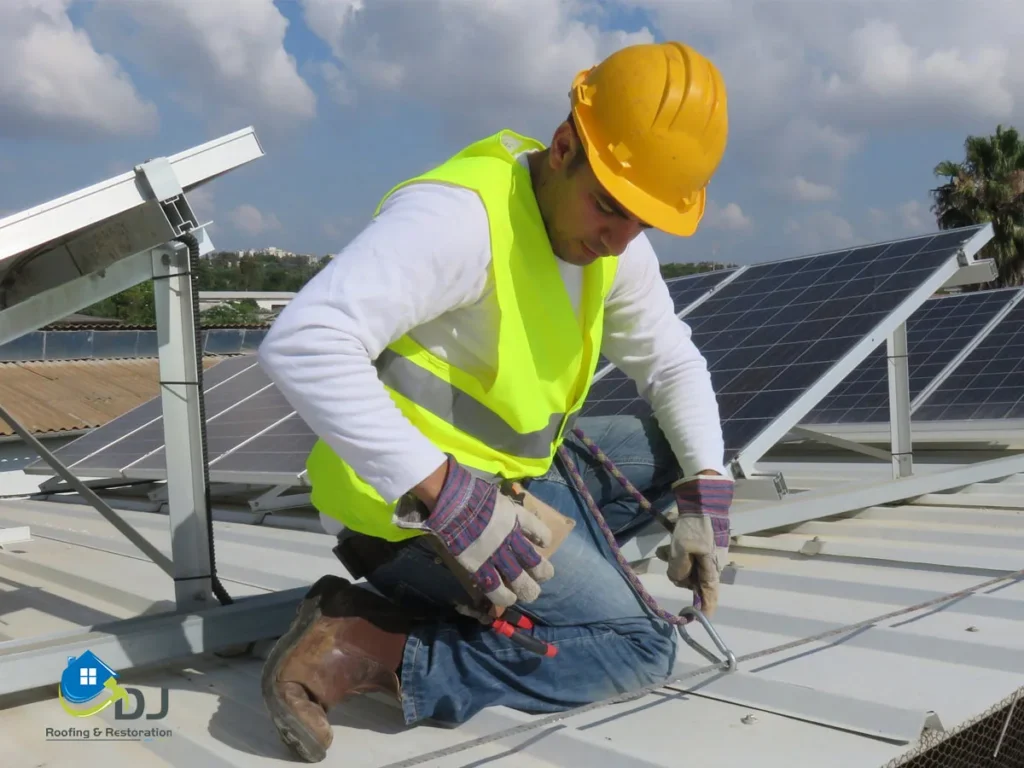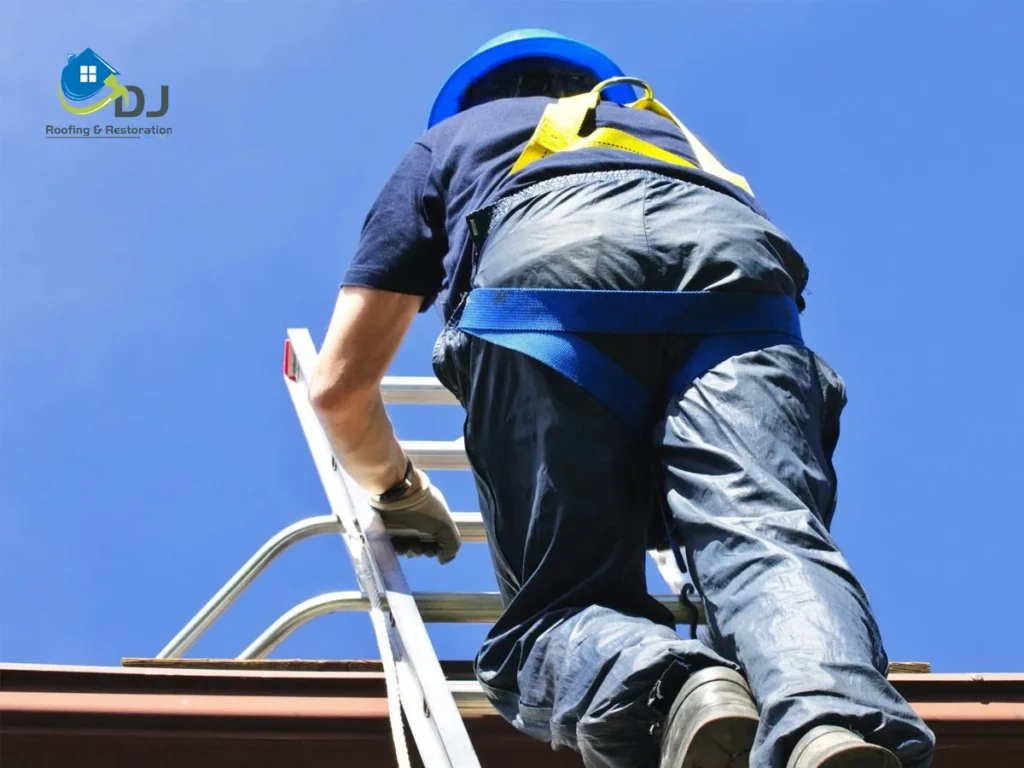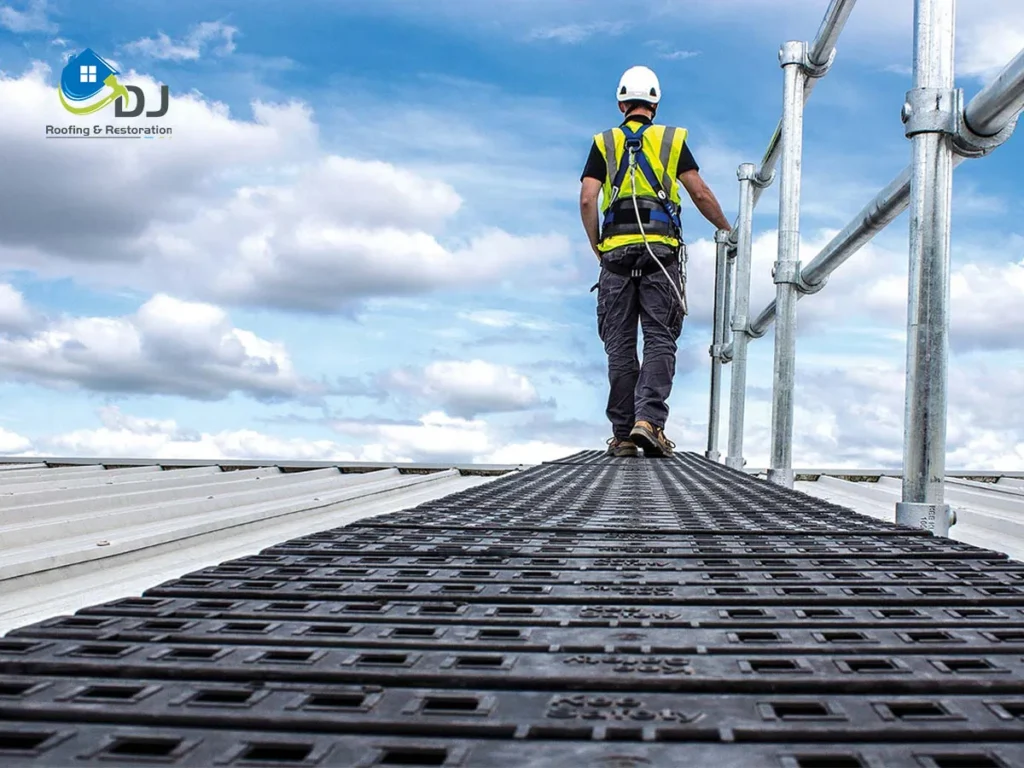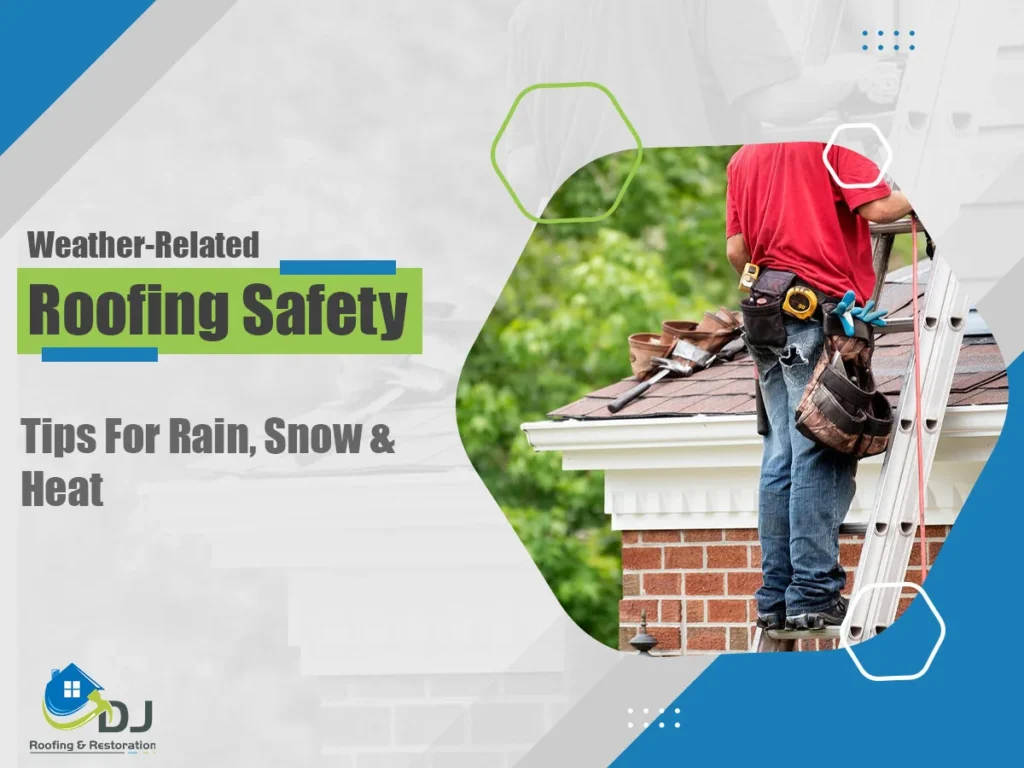Weather-Related Roofing Safety Tips For Rain, Snow & Heat
Roofing safety is essential as it ensures the safety of both workers and yourself. If you plan for some DIY activity by knowing the proper measures, you can prevent all kinds of accidents. We know mishaps often result in severe injuries or fatalities, leading to legal and financial liabilities. So, with this article, we will share some rigorous roofing safety tips that will provide adequate training while you safely utilise each equipment.
For professionals, roofing projects often face weather-related challenges that significantly impact work schedules and outcomes. Unpredictable weather patterns, such as heavy rain, snow, or high winds, can halt operations, increase project costs, and affect the quality of workmanship. In addition, extreme temperatures and UV exposure can accelerate roofing material degradation, leading to premature failures and costly repairs. Therefore understanding and mitigating these weather-related challenges.
Roof Safety Tips In Rain

- Inspecting the roof before rain is crucial for identifying any pre-existing issues that may worsen during heavy rainfall. Look for loose or damaged shingles, cracks in the flashing, or signs of deterioration. Ensure all roof vents and chimney caps are securely placed to prevent water infiltration.
- Cleaning gutters and drains is vital to prevent water buildup on the roof. Clogged gutters can lead to water overflow, damaging the roof’s structure. Before rain, clear debris, leaves, and dirt from gutters and downspouts to ensure proper drainage.
- Check for leaks and water damage involves inspecting the interior of your home for signs of water infiltration or water damage on the ceiling or walls. Address any existing leaks promptly to prevent further damage during rain.
Avoid walking on a damp roof if possible. If necessary, you need to use sturdy footwear with good traction and a safety harness. Always work with a partner, and never work on a steep, wet roof in slippery conditions. Consider using roof jacks for added stability and safety.
Flat Roof Maintenance And Restoration|Do’s & Don’ts|
Roof Safety Tips In Snow

Clearing snow accumulation from a roof is a crucial winter maintenance task to prevent structural damage and potential hazards. Excessive snow adds significant weight, leading to roof collapse. It’s essential to assess the snow load and remove it strategically to avoid uneven distribution, which can cause structural stress.
Roof rakes, snow blowers, or shovels are commonly used for this task. Special care should be taken to avoid damaging roofing materials while clearing snow.
- Choosing the right tools and techniques is essential for safe and effective snow removal. Roof rakes with extended handles are ideal for single-story homes, while two-story houses may require long-reach snow removal tools. Work from the roof’s edge to prevent falling snow from damaging property or causing injury. It’s vital to clear snow layer by layer, avoiding sudden, heavy removal that could lead to roof damage.
- Ice dams form when snow on the roof melts and refreezes at the eaves, causing water backup and potential leaks. Ensure proper attic insulation and ventilation to maintain a consistent roof temperature to prevent ice dams. Additionally, heated cables or calcium chloride can be strategically placed on the roof to prevent ice dam formation.
- Safety is essential when working on a snowy roof. Use fall protection equipment like harnesses and anchor points, ensuring they are securely fastened. Wear non-slip footwear and avoid working alone to assist in emergencies. Be cautious of falling icicles and snow, and always clear a safe work path.
- Check weather conditions and postpone work during heavy snowfall or icy conditions.
Roof Safety Tips In Heat

Roofing work during hot weather requires careful consideration of worker safety. High temperatures can lead to various heat-related issues. It’s crucial to schedule roofing tasks during more excellent parts of the day, such as early morning or late afternoon, to minimise exposure to extreme heat. Additionally, using reflective roofing materials can reduce the heat absorbed by the roof’s surface.
- Staying hydrated and taking breaks are essential practices for preventing heat-related problems. Workers should drink water frequently to keep hydrated and avoid beverages like caffeine or alcohol that can dehydrate the body. Frequent breaks in shaded areas must be given for the workers to cool down and prevent overheating.
- Using protective clothing and sunscreen is vital. Workers should wear lightweight, breathable clothing that covers exposed skin and use a high-SPF sunscreen to shield themselves from the sun’s harmful UV rays. Wide-brimmed hats and sunglasses also provide additional protection.
- Recognising signs of heat-related illnesses is crucial for early intervention. Workers should be educated on heat exhaustion (profuse sweating, weakness, nausea) and heat stroke (high body temperature, confusion, loss of consciousness). 4
Immediate medical attention is necessary in case the symptoms occur. Employers should have an emergency plan to respond to such situations swiftly and effectively.
General Roofing Safety Tips

- Proper equipment and safety gear are essential when working on a roof. This includes wearing a sturdy harness and using appropriate fall protection systems like lifelines or guardrails. Additionally, ensure that all equipment, such as ladders and scaffolding, is in good condition and set up correctly. Inspect tools for defects and wear appropriate gloves and eye protection to prevent accidents.
- Maintaining a secure footing is critical for roof safety. Always wear slip-resistant shoes with good traction, and be cautious of wet or icy conditions. When climbing ladders, maintain a three-point contact, keeping both hands and one foot or both feet and one hand on the ladder at all times.
- Stay cautious around roof edges is vital to prevent falls. Use warning lines, barricades, or safety nets near the roof’s edge, especially on sloped ceilings. Avoid leaning over the edge; never work on a top during strong winds or adverse weather conditions.
- Stays aware of the electrical hazards when working near or on a roof. Be mindful of overhead power lines and maintain a safe distance. Use non-conductive tools and equipment, and only touch electrical wires with proper training and safety precautions. Ensure all electrical equipment is grounded correctly to prevent electrocution risks.
Emergency Preparedness
Emergency preparedness is essential for ensuring the safety and well-being of individuals and teams in various situations. One crucial aspect of this preparedness is having a well-thought-out escape plan.
- It must include designated exit routes, meeting points, and alternative options if the primary route is blocked. It should be regularly reviewed and practised to ensure everyone is familiar.
- Staying updated on weather forecasts is vital, as weather conditions can quickly escalate into emergencies. Awareness of upcoming weather events allows individuals and teams to take proactive measures, such as rescheduling activities or evacuating if necessary.
- Communication is critical during emergencies. Team members should have clear communication channels to share information, coordinate actions, and provide updates on their status. Effective communication can prevent confusion and ensure everyone’s safety.
- Knowing emergency contact information is crucial. This includes personal contacts, local emergency services, medical facilities, and relevant authorities. Quick access to this information can help in emergency response and ensure the appropriate help is summoned.
Conclusion
Hope this information has been helpful to you. Prioritising safety is crucial as it safeguards lives and prevents accidents. Neglecting safety measures can lead to dire consequences. So Make informed choices by following the roof safety tips mentioned above.
For premium roofing solutions in an affordable range, get in touch with DJ Roofing today.

